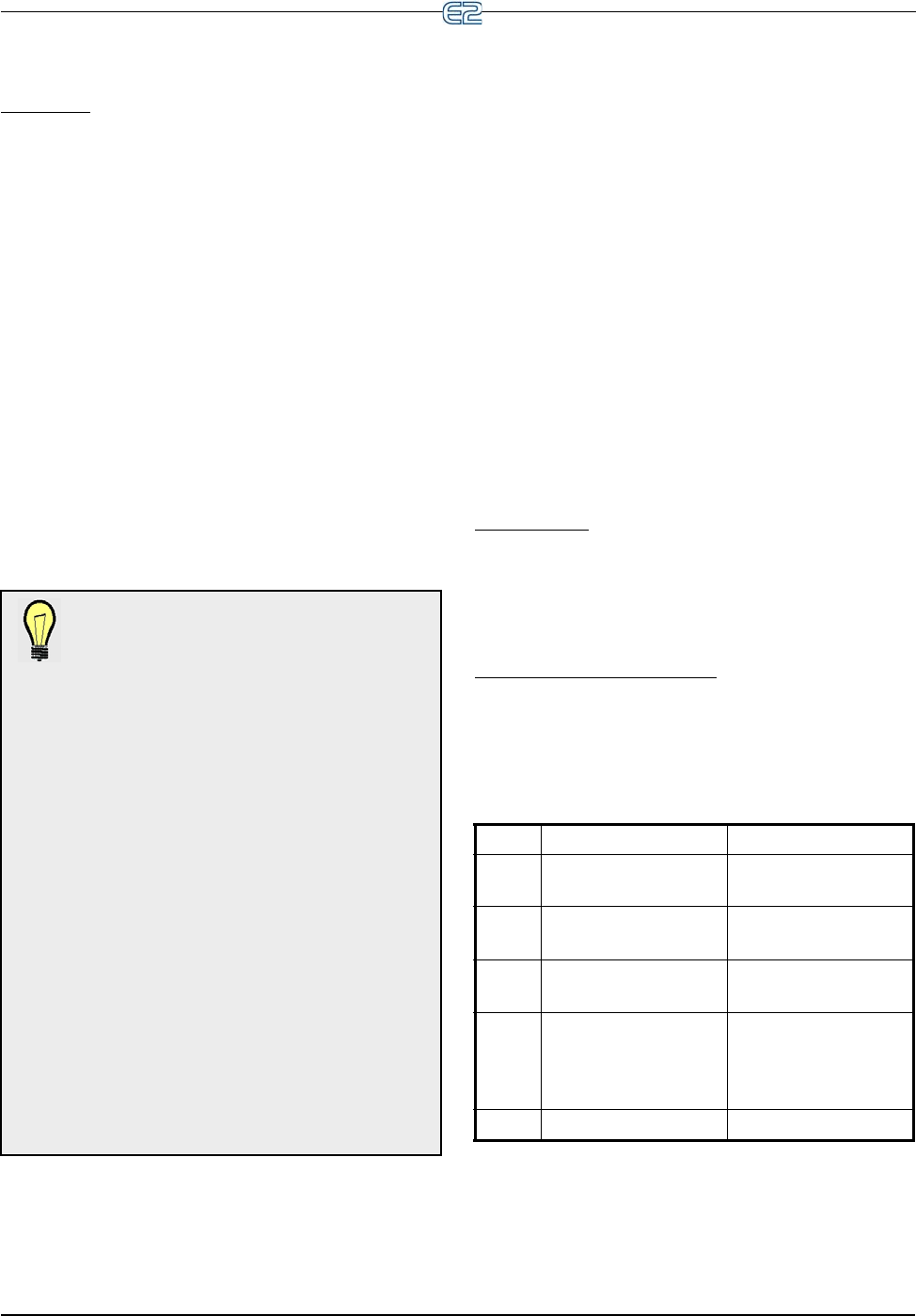
10-28 • E2 RX/BX/CX I&O Manual 026-1614 Rev 4 5-JAN-2013
E2. Figure 10-11 and Figure 10-48 show a typical Setup
screen and its primary elements.
Index Tabs
The ten boxes at the top of the screen labeled C1
through C0 are known as the index tabs. These tabs pro-
vide a short index of the screens
that are used to set up the
current application. The numbers C1 through C0 represent
the screen numbers (C1 being screen 1, C2 being screen 2,
and so on).
Each of the Setup screens that you may access will
have
a name beside its number. But as in Figure 10-11 and
Figure 10-48 for example, you will notice some tabs have
names, while others are blank.
As you move through these screens within the Setup
Edito
r, the highlight will move to different tabs to indicate
which screen is being displayed.
• Pressing (PREV
TAB) will back-up the order
of the screens.
• Pressing (H
OME) at any point will take you
to the Main Status (Home) screen.
TIP: To see each screen in a typical setup for
the E2 RX controller, start from the Main Sta-
tus (Home) screen.
1. Pos
ition the cursor somewhere inside the Suc-
tion Groups section and press
and
(Setup), or just (SETUP) from the Home
screen. The General Setup screen will be dis-
played.
2. Press (NEXT
TAB) to move the cursor
to Setpoints. The Setpoints Setup screen is dis-
played.
3. Press ag
ain and the Inputs Setup screen
comes up.
4. Press a few mo
re times to see the rest of
the Setup menu screens. When the C0 tab
(MORE) is highlighted, there may be more
than one extra Setup screen. Press
+
(zero) to see a list of all Setup screens for that
application.
5. K
eep pressing while taking note of the
extra screens until C1 is highlighted once
more.
These screens (C1 throug
h C0) contain all of the set up
information that is associated with the selected suction
group.
Blank tabs are inaccessible. There are several
reasons
why a tab may be inaccessible (i.e., without a name next to
the number):
• The tab (and the corresponding screen) is unused
and
reserved for later revisions.
• The screen may only be accessed when running in
Full
Options mode.
• The screen may require one or more fields to be set
to
certain values before the screen may be accessed.
For example, a screen containing nothing but com-
pressor proof input definitions might be hidden if
there is
a field on another screen that tells the sys-
tem there are no proof checking devices
on the
group’s compressors. To access this screen, you
would have to set this field to “YES”.
The screen you are cu
rrently in is always highlighted
in the screen’s index tab. For example, in Figure 10-11
and Figure 10-48, because Screen 1 is displayed, tab C1 is
highlighted.
The Help Line
The line near the bottom of the screen above the func-
tion key menu is the help line. The help li
ne this time pro-
vides a short description of the selected field, along with
im
portant information such as minimum and maximum
value ranges, and setup instructions.
The Function Keys For Setup
The five boxes at the very bottom of the screen show
the function of keys through . Most of these
keys retain the same function no matter which field,
screen, or application is selected in a Setup screen. Table
10-8 shows what each key is used for.
Table 10-8 - Funct
ion Keys for Setup Screens
Key Function Description
! PREV TAB Moves backward one
screen
@ NEXT TAB Moves forward one
screen
# EDIT Opens the Edit Menu
box
$ STATUS, OVERRIDE,
or LOOK
UP
Opens the Detailed Sta-
tus screen, Opens the
Override Up
date screen,
or Look Up Tables
% CANCEL Cancels the operation
After all of the functions of E2 are set up, the next step
is to set the System
Configuration, which is basically how
the system is used.
